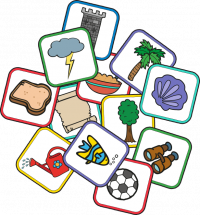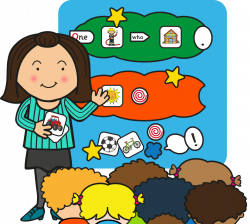"Odd One Out" Literacy Lesson for Key Stage One
Introduction: The Power of Conversation in Literacy
Conversation is an essential tool in building literacy skills in young learners. It lays the foundation for effective communication and comprehension. Through speaking and listening, children begin to explore language and its nuances. The integration of dialogue in the classroom creates a dynamic learning environment.
 Interactive dialogue transforms classroom dynamics by inviting every pupil to contribute. It encourages children to share their ideas and listen attentively to others. This approach enhances student engagement and enables personalised learning. Developing these conversational skills is key to improving literacy results.
Interactive dialogue transforms classroom dynamics by inviting every pupil to contribute. It encourages children to share their ideas and listen attentively to others. This approach enhances student engagement and enables personalised learning. Developing these conversational skills is key to improving literacy results.
Learning Objectives and Key Messages
The primary objective of this lesson is to enhance pupils’ oracy skills through lively conversation. Teachers will focus on boosting critical thinking and active listening among key stage one students. The lesson is designed to pave the way for improved literacy outcomes.
The activity underscores the importance of identifying the odd one out as a way to spur critical analysis. It encourages collaborative discussion and the sharing of justified opinions. This approach aligns with innovative methods used to boost literacy results.
Overview of the 'Odd One Out' Activity
This activity invites pupils to examine a series of images or phrases to determine which is different. The task is both engaging and thought provoking. Its purpose is to spark group discussion and creative reasoning.
Teachers begin by presenting a selection of items to small groups of pupils. Pupils then deliberate on each item in turn, comparing similarities and differences. This structured dialogue ensures every child has the opportunity to contribute.

The collaborative nature of the exercise fosters critical thinking as pupils justify their choices. Group collaboration further enhances communication and active participation. The process helps build confidence in decision-making and reasoning skills.
Materials and Resources Needed
Teachers will need a range of images and phrases that align with Key Stage One reading levels. Visual aids should be colourful and engaging to capture pupils' attention.
A display board or interactive smartboard can be used to present the images effectively. Supplementary materials, such as the Mighty Writer Resource, can further support lesson delivery.
Setting Up: Grouping Pupils and Preparing Phrases/Images
Begin by organising pupils into small, diverse groups that balance varying abilities. Consider grouping pupils by their communication strengths to support peer learning. Clear grouping strategies create an inclusive environment that welcomes all voices. This initial organisation sets the tone for productive group interactions. 
Next, carefully select phrases and images that are relevant and engaging for Key Stage One pupils. Ensure the items chosen pose a clear, but subtle, deviation from the other options. Preparations should focus on stimulating curiosity and promoting thoughtful discussion. Well-chosen materials are essential to foster interactive learning.
Facilitating Group Discussions and Encouraging Oracy
Initiate the discussion by asking open-ended questions to draw pupils into the conversation. Give each group ample time to endorse their ideas and reason through their conclusions. Active listening and turn-taking should be modelled by the teacher. Encouraging every child to participate cultivates an atmosphere of inclusivity.
Teachers can circulate among groups to provide gentle guidance and ensure discussions remain focused. It is important to acknowledge each contribution to maintain a supportive environment. This engaged facilitation supports the overall improvement of literacy outcomes.
Key Techniques: Identifying the 'Odd One Out'
Effective techniques involve having pupils articulate the distinctive features of each item. They should closely examine the provided images or phrases to spot subtle differences. Clarification questions help pupils refine their observations. This analytical process is crucial for identifying the odd one out accurately.
Encourage pupils to explain their choices using evidence from the items presented. Teachers can ask follow-up questions to deepen the analysis and prompt further dialogue. Justification of opinions is a key step in linking critical thinking with literacy outcomes. The activity thereby reinforces reasoning skills alongside collaborative communication.
Teacher Tips: Adapting and Enhancing the Lesson
Consider adapting the difficulty of the items to suit different class levels and learning needs. Teachers might integrate additional digital resources or partner with the Mighty Writer for enhanced guidance. Customising the activity can ensure maximum engagement across all groups.

Additional tips include varying the pacing of the lesson and offering individual feedback. Encourage pupils to reflect on their decision-making process to solidify learning. These adaptations help to reinforce literacy skills.
Conclusion: Reflecting on Improved Literacy Outcomes
The 'Odd One Out' lesson is a testament to the transformative power of conversational learning in primary classrooms. By engaging pupils in group discussions, teachers can significantly boost oracy skills. Critical thinking and communication are enhanced through careful analysis of visual cues. This activity not only improves literacy outcomes but also promotes teamwork and creative reasoning. Teachers are encouraged to adapt the lesson to best meet their classroom needs.
Looking for More Literacy Lesson Ideas?
Playdough Letter Fun Teach the Teacher Activity
Buttoned-Up Letters Mark Making Activity for your KS1 Class
